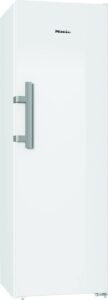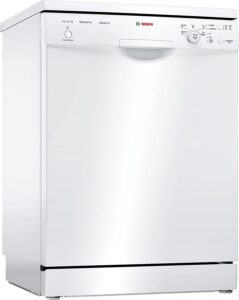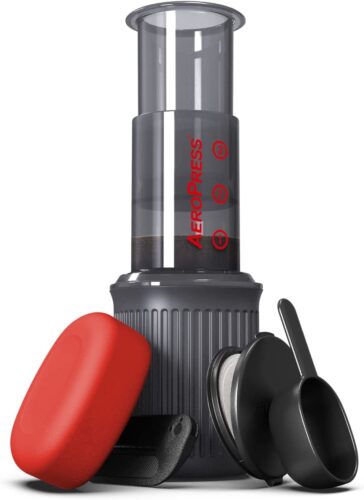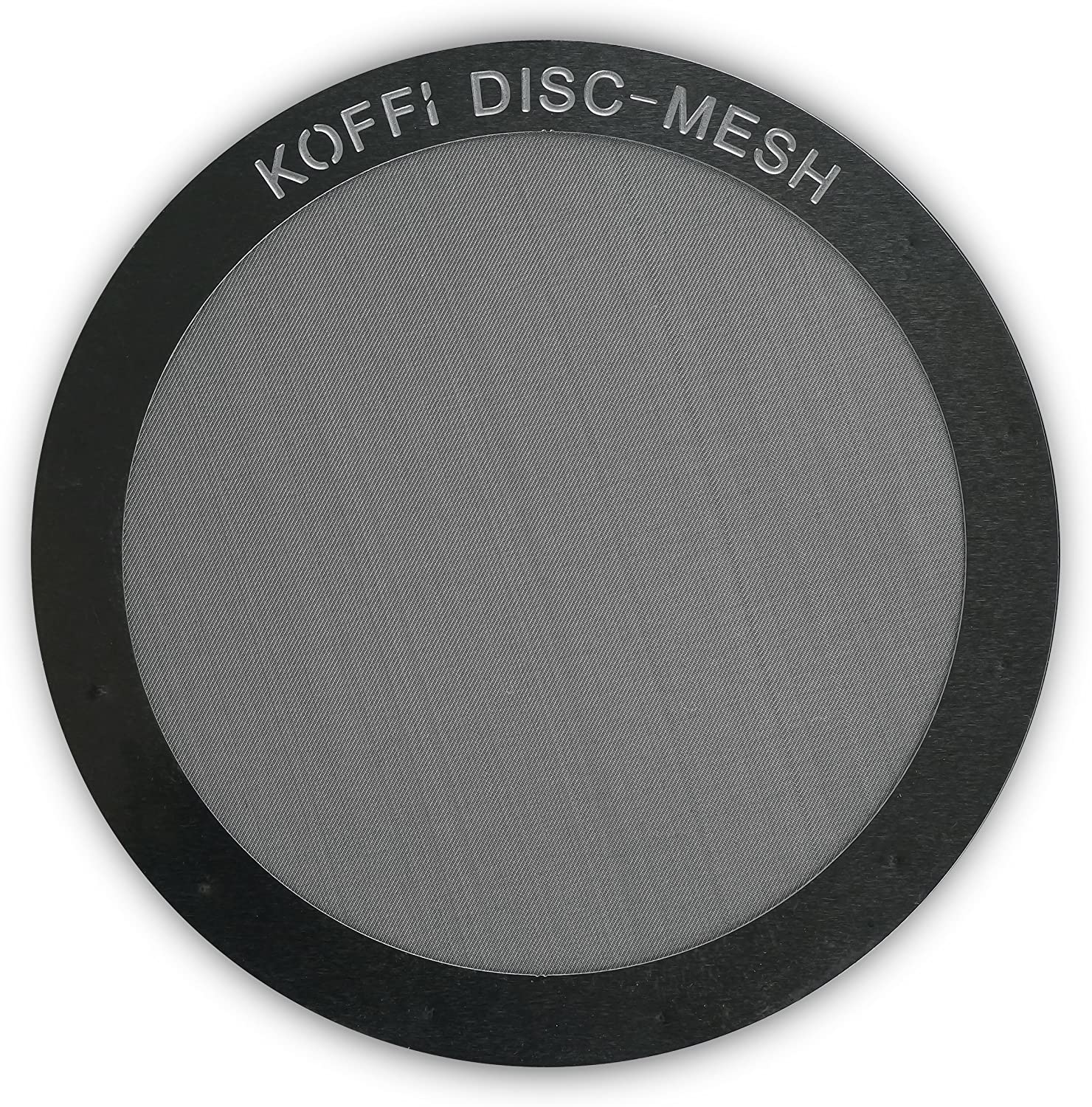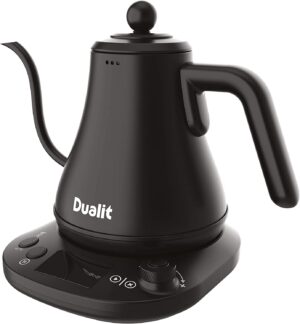Energy-efficient Office Appliances: 16 Ways to Save Money at the Office
Want to save money or the environment at the office? Energy-efficient office appliances are a fantastic start.
But what energy-efficient appliances are out there? Are there any quick and easy steps that you can implement right away?
Great questions – let’s take a closer look.

Quick Wins for Using Existing Office Appliances More Efficiently
Before we even get into the energy-efficient office appliances, let’s take a look at some immediate steps you can take to better use existing equipment.
Power Down
The first tip is to power down equipment when not in use.
Try to encourage employees or colleagues to power down equipment when not in use.
This includes computers, monitors, printers, copiers, or any other device you think this may apply to.
Power Strips
One really efficient thing you can do is to use power strips where possible.
This will make it easier to turn off multiple devices at once when they are not in use and help to reduce standby power consumption, which can account for up to 10% of a building’s energy use.
Enable Power Management Features
Most modern devices have power management features that can help save energy when they are not in use.
Enable these features on all equipment to ensure they automatically enter a low-power mode when not in use.
Use Energy-Efficient Office Appliances
We delve a little deeper into energy-efficient office appliances later in the article, but let’s go over the basic principle: when purchasing new office equipment, look for energy-efficient models.
These devices are designed to use less energy while still providing the same level of performance.
Turn off the Lights
The last one out turns off the lights. That should be your mantra and the mantra you should try to encourage your employees or colleagues
Ask them to turn off lights in areas that are not being used, such as meeting rooms, break rooms, and bathrooms.
Use Natural Light
Use natural light whenever possible to reduce the need for artificial lighting.
Consider rearranging workstations to take advantage of natural light sources.
Adjust Thermostat Settings
Adjust the thermostat settings to ensure the office is not overheated or over-cooled.
A one-degree change in temperature can save up to 5% on heating and cooling costs.
Switch to LED lights
Reports show that replacing traditional incandescent bulbs with energy-efficient LED lights can save between 70 and 80% on lighting costs.
You can read more about the benefits of using LED lights here, in our dedicated article.
Use Laptops Instead of Desktops
Laptops use significantly less energy than desktops and can be a more energy-efficient option for employees who don’t need a fixed workstation.
Choose A-Rated Equipment
Look for office equipment with a great energy rating.
Due to the Energy Labeling Regulations, each appliance must have an energy label and the goal here is to get A-rated appliances where possible.
Turn off Screensavers
Screensavers use more energy than simply turning off the monitor.
Encourage employees or colleagues to turn off their monitors when they are not in use, rather than relying on screensavers.
Use Multi-Function Devices
Instead of having separate devices for printing, scanning, copying, and faxing, consider investing in a multi-function device.
These devices are designed to be more energy-efficient than multiple separate devices.
Print Double-Sided
If you have to print, encourage double-sided printing whenever possible to reduce paper waste and save on energy and paper costs.
Long-Term Wins for Energy-Efficient Office Appliances
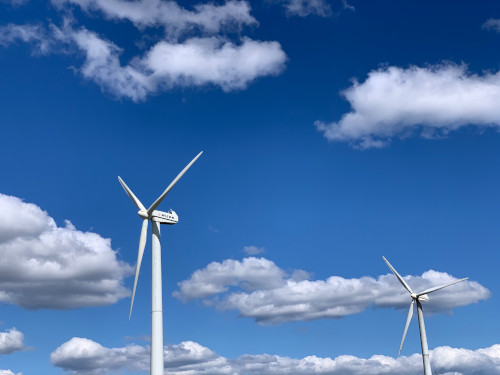
Now that we’ve looked at some of the quick wins available to use, let’s take a look at some of the more long-term strategies for an eco-friendly office.
Develop an energy management plan
First of all, it’s a good idea to develop an energy management plan.
The goal of this plan should be to outline the company’s energy goals, strategies, and procedures.
This can include setting energy reduction targets, conducting energy audits, monitoring energy consumption, and setting rules or guidelines employers must strive to aim for.
Invest in energy-efficient equipment
Okay, this one is a no-brainer: you need to invest in energy-efficient office equipment.
The initial outlay might be high compared to regular equipment, but you’re gonna reap the rewards in the long run.
You should look for devices and/or appliances with great energy-efficient ratings. You can read about how to look for the energy ratings and what they mean right here.
Implement virtualization
For those in the tech industry, it might be worth going virtual.
What do I mean by that? Don’t house and maintain physical servers – sign up to a virtual server provider. That way, you won’t be responsible for the energy required to run those servers.
Encourage remote work
One big thing to come out of the pandemic is that there is more opportunity for people to work remotely.
For operational costs, this is great for businesses It greatly reduces energy costs or even lease money if you are able to downgrade facilities as a result.
As a great by-product, this with help the environment due to less commuting and also improve the quality of life for your employees.
How to Choose the Best Energy-Efficient Devices or Appliances
There are a lot of common factors in choosing the best energy-efficient device or appliance.
Let’s take a look at these factors and how they will help you make up your mind.
Energy-Efficient Ratings
For every device or appliance you want to buy, check out their energy-efficiency label.
We go into it in a little more detail here, but in the UK you can identify energy-efficient appliances with a pretty comprehensive labelling system.
The energy rating labels provide a scale from A to G, with A being the most efficient and G the least.
The label also provides important information about the product’s energy consumption and other performance factors.
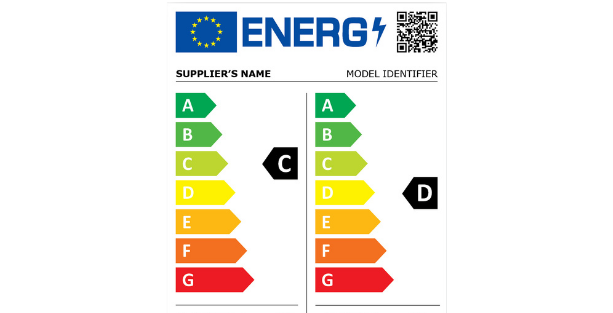
Power Management Features
For a lot of office devices, power management features are also a great sign of energy-efficiency.
…but what do I mean by Power Management Features?
What are Power Management Features?
Basically, it’s a feature on the device that is designed to optimize energy usage and improve battery life, such as:
- Sleep mode. After a certain amount of time, the device goes to ‘sleep’ and the screens go black.
- Battery saver mode. Some devices, such as mobile phones, have features that reduce background energy consumption and extend battery life.
- Smart charging. Some devices have smart charging features which adjust the charging rate based on the battery’s current state. This helps to prevent overcharging and will prolong the battery’s lifespan.
How to Choose the Best Energy-Efficient Laptops
Other than the standard energy labels or power management features, the main things to look for when choosing energy-efficient laptops are:
- Processor efficiency
- Display technology
- Battery life
Let’s take a look at these in a little more detail…
Processor Efficiency
With the move towards more energy-efficient products, processors are now labelled as such by all the major players in the processors game.
As of writing this, look out for Intels U and Y series, as well as AMD’s Ryzen processors.
Display Technology
The laptop screen is another area where energy consumption can vary.
The trick is to look for laptops with LED or OLED displays, which are more energy-efficient than traditional LCD displays.
Battery Life
The battery life of the device is also worth considering.
A longer battery life means less charging, which in turn means less energy consumption in general.
How to Choose the Best Energy-Efficient Monitors
Whether you have a PC or a laptop, you’re probably going need to energy-efficient monitors to aid in your employee’s productivity and workspace.
Other than the standard energy labelling and power management features, what else should you consider?
Let’s take a look.
Monitor Size
It’s an undeniable fact that a larger monitor will take up more energy than a smaller one; the large screen equals more display output. More display output equals more energy usage…you get the idea.
Your employees don’t need absolutely massive, gaming-perfect-sized monitors. They just need the right-sized monitor to do their jobs.
Display Technology
The trick for monitors, much like laptop screens, is to look for laptops with LED or OLED displays, which are more energy-efficient than traditional LCD displays.
Brightness
Adjusting the brightness of the monitor can significantly impact energy consumption.
Look for monitors with adjustable brightness settings and set the brightness to the lowest level that is comfortable for your work.
How to Choose the Best Energy-Efficient Printers
The first question you need to ask with printers is – do you absolutely need a printer? Can you alter your business model to get around using one?
After all, a paperless office is a more eco-friendly office.
…but if you do need a printer, aside from looking for the energy rating label and power management technology…
Print Technology
One important thing to consider is what kind of print technology the printer uses and what you’ll be using your printer for.
Why? Because Inkjet printers generally consume less energy than laser printers.
However, laser printers are more efficient at printing large volumes of text documents.
Duplex Printing
Duplex printing is essentially double-sided printing.
Double-sided can significantly reduce paper waste and energy consumption and looking for printers with automatic duplex printing capabilities will let you reap those rewards.
Ink or Toner Efficiency
You can now get printer Ink cartridges that are designed to be energy-efficient.
Also, look for high-yield or ink-saving cartridges that reduce the number of times the cartridge needs changing – this can help too.
How to Choose the Best Energy-Efficient Copiers
Much like with printers, the first question you have to ask yourself when looking to purchase a copier is: do we really need it?
It’s quickly become a paperless world…is a copier really a part of your business model any more? Will the requirement change in the near future?
It’s worth considering, because if your business is becoming less reliant on copying…why get one at al;?
…BUT if you do still need a copier, you should look out for the following…
Print Volume
High-volume copiers generally consume more energy than low-volume copiers, so if you don’t need a copier that’s going to make hundreds of copies at once, get a smaller copier.
Duplex Printing
Like with printers, double-sided printing can significantly reduce paper waste and energy consumption.
If you’re looking for a copier, look for one that has this functionality for long-term benefits.
Toner Efficiency
You can now get printer Ink cartridges that are designed to be energy-efficient.
Also, look for high-yield or ink-saving cartridges that reduce the number of times the cartridge needs changing – this can help too.
How to Choose the Best Energy-Efficient Surge Protector
Surge Protectors are great for around the office.
They protect again voltage spike, they provide multiple outlets for you to plug stuff in and they can even extend the lifespan of your electronic devices or applications.
The best way to choose an energy-efficient surge protector is to plan ahead and figure out how many outlets you will be needing.
The number of outlets on your surge protector is important because you want to try and make sure that there are no outlets left over.
Why? Because those outlets will be consuming standby power.
How to Choose the Best Energy-Efficient Security System
A big thing for a business is security and if you let your own building and use a security system to protect yourself, there are ways to be a little more energy-efficient.
Let’s take a look…
Power Consumption
Most security devices will give you some idea of the wattage and power consumption it will use. The trick here is to get it as low as possible, obviously making sure the system still does all you need it to.
Some systems will have features like low-power modes, automatic shut-offs, or even just outright energy-saving options that you can utilise.
Connectivity
Another great thing to consider is how the security system is connected – i.e. is it wired in or wireless?
If you choose a wireless security system can reduce the need for additional wiring and therefore be more energy-efficient.
Motion Sensors
Most modern security cameras will have motion sensors and these are great. Why? Because they’re only called into action when motion is detected.
This means that it’s not using full power 100% of the time – only when motion is detected.
How to Choose the Best Energy-Efficient Refrigerator
Other than the standard energy-efficiency labels, here’s what to look for when choosing the best energy-efficient refrigerator.
Size
A bigger fridge is more often than not more energy-efficient than smaller ones because of better insulation and more advanced temperature control systems.
Of course, the better the insulation, the more cool is going to keep and therefore less coolness will need to be generated.
Temperature Control
As mentioned above, temperature control is another great feature to have for energy-efficiency.
These features can include great technology such as separate cooling zones, temperature sensors, and adjustable thermostats.
These features enable the fridge to better work at optimal temperature and therefore consume less energy.
Our Recommendation
For a refrigerator, we recommend the Miele K28202 D Freestanding Refrigerator.
Check out this elegant Miele fridge on Amazon
Check PriceIf you click this link and make a purchase, we earn a commission at no additional cost to you.
How to Choose the Best Energy-Efficient Dishwasher
Dishwashers aren’t a necessity in an office, but sure do make lives easier in operational management. Especially for a small office that doesn’t employ cleaners to specifically organise the kitchen.
Here’s how to choose the best energy-efficient one…
Water Efficiency Rating
Dishwasher should have a water efficiency rating (as well as an energy-efficiency rating) and a dishwasher that is great at water efficiency tends to use less energy than other models.
Size
Make sure you choose a dishwasher of a sufficient size to suit your needs.
Why? If you choose a dishwasher is much bigger than you need it to be, it’ll use more energy and water than you actually need.
A smaller one would use the right amount and will save you money in the long run.
Our Recommendation
For an energy-efficient dishwasher, we recommend the Bosch Serie 2 Freestanding Dishwasher…
Check out this brilliant Bosch Dishwasher on Amazon
Check PriceIf you click this link and make a purchase, we earn a commission at no additional cost to you.
How to Choose the Best Energy-Efficient Coffee Maker
Coffee is important to a business and the amount of use coffee makers get, it’s a good idea to be as energy-efficient with them as possible.
If you can get away with a great cafetieres or two, do that. If you can get a couple of Aeropress’ with reusable filters
…BUT the bigger the office, the bigger the coffee machine.
Here’s how to choose the best energy-efficient coffee maker…
Brewing Time
One good thing to look for is the brewing time. The shorter the brewing time, the shorter the coffee machine is on and working for, which means using less energy than longer brewing models.
Capacity
If you only have a small office, choose a coffee machine with a smaller capacity. A larger capacity will take longer to heat up and be more wasteful in energy and coffee.
A Digital Machine
Modern coffee machines come with digital features that often allow you to put them in standby mode when not in use and all whir into life when in use.
Our Recommendation
Our first port of call for a coffee maker is an Aeropress. With this, you can make great individual cups of coffee.
Check out this Aeropress portable coffee press on Amazon
Check PriceIf you click this link and make a purchase, we earn a commission at no additional cost to you.
And combine this with a reusable coffee filter cap and you have a great eco-efficient way of making a great brew.
Check out this Aeropress reusable filter on Amazon
Check PriceIf you click this link and make a purchase, we earn a commission at no additional cost to you.
How to Choose the Best Energy-Efficient Kettle
The kettle is an important fixture in any office. Whether you want to make tea or coffee or a cheap, but definitely cheerful, Pot Noodle lunch, this thing is definitely getting used.
So it makes sense to get the best energy-efficient kettle available, right? Of course, it does! Let’s take a closer look at what you need to look for…
Capacity
It’s important that you go for a kettle that is at a capacity to suit your business needs. If you have a small office, get a kettle with a smaller water capacity – it’s really that simple.
Energy-Saving Features
Look for tea kettles with energy-saving features, such as automatic shut-off or temperature control settings that allow you to heat water to the exact temperature you need.
Our Recommendation
If you want an energy efficient kettle, we recommend Dualit Pour Over Fast Boil Electric Kettle.
Check out this awesome Dualit kettle on Amazon
Check PriceIf you click this link and make a purchase, we earn a commission at no additional cost to you.

